
This source discusses the purpose of research writing.
- Subject:
- Composition and Rhetoric
- English Language Arts
- Material Type:
- Textbook
- Provider:
- LibreTexts
- Author:
- Athena Kashyap
- Erika Dyquisto
- Date Added:
- 06/28/2023

This source discusses the purpose of research writing.

Microorganisms are the dominant life forms on earth, are found in almost every conceivable environment, and are essential to sustaining life on this planet.
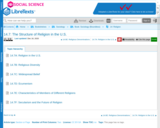
Due to the First Amendment, which grants freedom of religion , there is a diversity of religious beliefs and practices in the U.S.
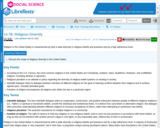
Religion in the United States is characterized by both a wide diversity in religious beliefs and practices and by a high adherence level.
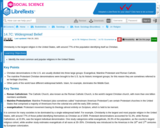
Christianity is the largest religion in the United States, with around 77% of the population identifying itself as Christian.
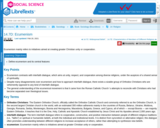
Ecumenism mainly refers to initiatives aimed at creating greater Christian unity or cooperation.
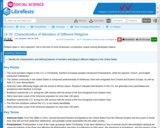
Religion plays a “very important” role in the lives of most Americans; a proportion unique among developed nations
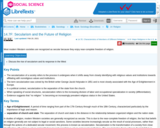
Most modern Western societies are recognized as secular because they enjoy near-complete freedom of religion.
.
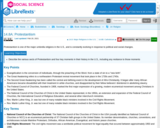
Protestantism is one of the major umbrella religions in the U.S., and is constantly evolving in response to political and social changes.

Catholicism has a long history in the U.S., with the Catholic Church the single largest religious denomination
in the United States.
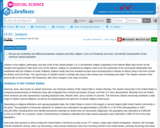
American Jews, also known as Jewish Americans, are American citizens of the Jewish faith or Jewish ethnicity. The Jewish community in the United States is composed predominantly of Ashkenazi Jews who emigrated from Central and Eastern Europe, and their U.S.-born descendants. Minorities from all Jewish ethnic divisions are also represented, including Sephardi Jews, Mizrahi Jews, and a number of converts. The American Jewish community manifests a wide range of Jewish cultural traditions, as well as encompassing the full spectrum of Jewish religious observance.
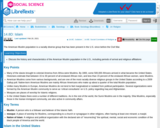
The American Muslim population is a racially diverse group that has been present in the U.S. since before the Civil War
.
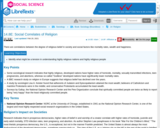
There are correlations between the degree of religious belief in society and social factors like mortality rates, wealth and happiness.
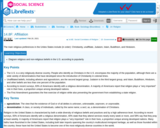
The main religious preferences in the Unites States include (in order): Christianity, unaffiliate, Judaism, Islam, Buddhism, and Hinduism.

Chemistry is the study of matter. Our understanding of chemical processes thus depends on our ability to acquire accurate information about matter. Often, this information is quantitative, in the form of measurements. In this lab, you will be introduced to some common measuring devices, and learn how to use them to obtain correct measurements, each with correct precision. A metric ruler will be used to measure length in centimeters (cm).

Textbook chapter used in CSI EDUC 204 Families, Communities, and Culture.

Textbook chapter used in CSI EDUC 204 Families, Communities, and Culture.

Performance Philosophy is an emerging interdisciplinary field of thought, creative practice and scholarship. The Performance Philosophy book series comprises monographs and essay collections addressing the relationship between performance and philosophy within a broad range of philosophical traditions and performance practices, including drama, theatre, performance arts, dance, art and music. The series also includes studies of the performative aspects of life and, indeed, philosophy itself. As such, the series addresses the philosophy of performance as well as performance-as-philosophy and philosophy-as-performance.

Adapt is an online homework system that exists within the LibreTexts platform. Instructors can create courses and assignments for students. Course shells for preparatory chemistry, general chemistry, analytical chemistry, and organic chemistry are available in the commons area.

American Literature I (1650–1860) examines significant literary works of early American and Puritan literature, the Enlightenment, American Romanticism, and pre-Civil War era. The course includes primary texts (many accompanied by video/audio options), historical background, literary criticism and interpretation, and instruction on writing about literature.
This course was developed by Anne Eidenmuller from Columbia Basin College with contributing work from Lumen Learning.